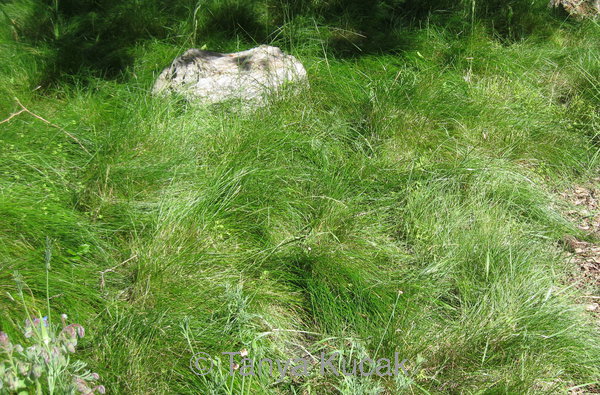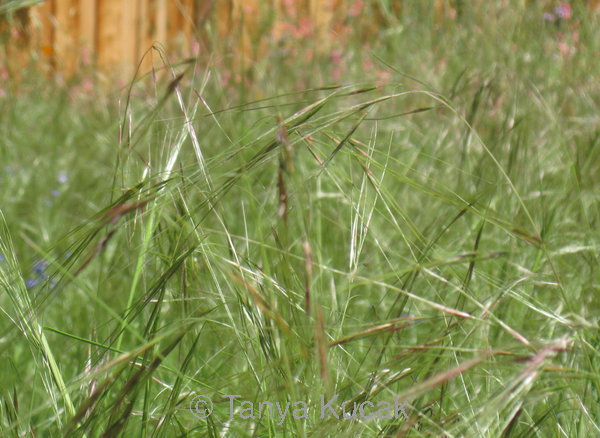
The longer the drought goes on, the more sense it makes to question lawns in our summer-dry climate. “Kids and dogs” are often offered as reasons to plant these large finicky monocultures, yet kids and dogs can have more fun playing in a diverse, interesting garden with nooks and crannies. If you must have a lawn, make it as small as possible.
You can get the look and feel of a greensward without the tedious maintenance and unending thirst of a Midwest-style lawn by using perennial native grasses. And if you'd also like an instant green carpet, rather than waiting for seed or plugs to fill in, it is in fact possible to get native sod.

Native grasses create billowy meadows that feel soft underfoot. Let the grasses flower and go to seed, marking the turn of the seasons and attracting pollinators. Their deep roots build soil and foster a diverse community of soil fauna.
Jodie Sheffield, who heads research and development at Delta Bluegrass, talked to native-gardening enthusiasts and landscape professionals last year about the virtues of drought-tolerant lawns and the varieties of native sod currently available.
If you let a traditional lawn go brown all summer (or substitute hardscape), you lose the ecological benefits that living plants provide. For example, a living native lawn retains soil moisture and cools the air around it about 10 to 15 degrees, Sheffield said. It also produces oxygen, filters pollutants, traps sediments, prevents erosion, and keeps down dust. Moreover, it provides food for birds and small mammals by supporting a healthy population of “insects, spiders, and worms among the grass blades and under the soil surface.”
Once established, the deeply rooted native sods can still use about 30 to 50 percent as much water as a traditional lawn. If you appreciate the aesthetic of a soft billowy meadow, you can let the native grasses grow long and flop over, then go to seed. Not only do unmowed grasses support more pollinators and birds, but they offer a sense of seasonality and enable you to forgo the considerable emissions, noise, and particulate pollution of mowers and edgers. Some of the grasses tolerate mowing as low as 2 inches high twice a month, but the more regularly and severely the grasses are sheared, the more water they will need.
The sods available from Delta Bluegrass are as follows.

Purple needlegrass glistens in the sun and creates a purple haze in mass plantings. Because of its sharp awns, it should not be planted in urban landscapes or parks, or in yards with dogs. It's an important component of the Native Preservation Mix and the Biofiltration Sod.
© 2016 Tanya Kucak